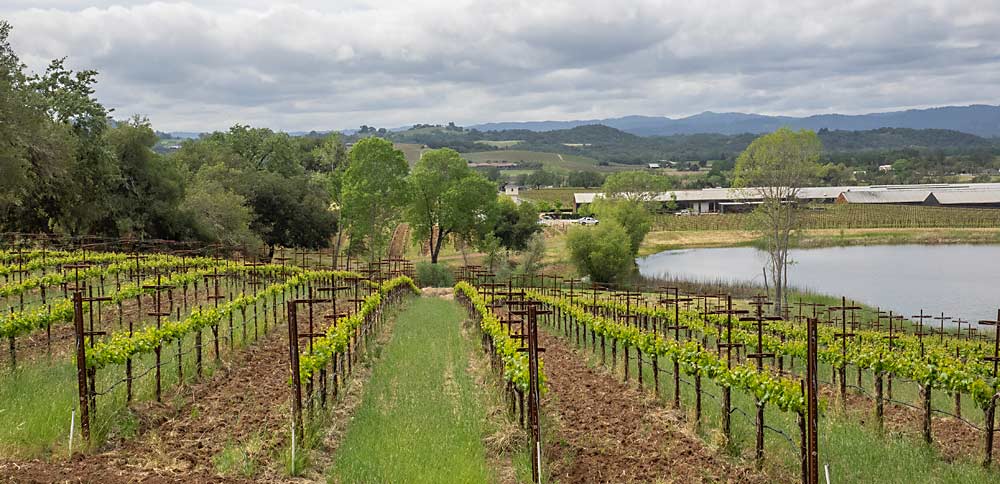
On a spring visit, the 69 acres of Silver Oak’s Alexander Valley estate vineyard, near Healdsburg, California, were striped brown and green from the every-other-row cover cropping. Vineyard manager Brad Petersen alternates covers such as bell beans, grass, vetch, red clover and magnus peas with tillage to control the vigor of his Cabernet Sauvignon vines and keep the soil cooler.
In this case, what’s good for the grapes is good for the planet: This conservation tillage sequesters a lot more carbon than full tillage. That’s not a shock. But Petersen was surprised to learn, through his participation in a regenerative agriculture pilot program, that his alternating approach sequestered 83 percent as much carbon as no-till would.
“I would have thought it would be more linear,” he said.

It’s one of many insights emerging from a carbon-modeling pilot project run by the nonprofit California Land Stewardship Institute. As popular as the term “regenerative agriculture” has become, there is little consensus on the definition of climate-friendly farming or how to adapt principles developed with commodity crops in mind to permanent crops such as wine grapes. Petersen is one of 20 winegrowers in Sonoma County who volunteered vineyards to help work out the kinks of carbon capture.
“The purpose was to take our very science-based program and subject it to the practical aspects of farming,” said Laurel Marcus, executive director of the California Land Stewardship Institute. “Climate’s not simple. We don’t know all the answers. And you have to engage to find them.”
Since 2017, the Napa-based nonprofit has been developing a climate adaptation certificate, in partnership with North Coast wine grape growers, that is vineyard-specific and focused on outcomes: sequestering carbon and reducing greenhouse gas emissions, and doing so affordably. The 2021 pilot, with the Sonoma County Winegrowers, was geared toward trying out carbon accounting, finding the easiest improvements and getting feedback.
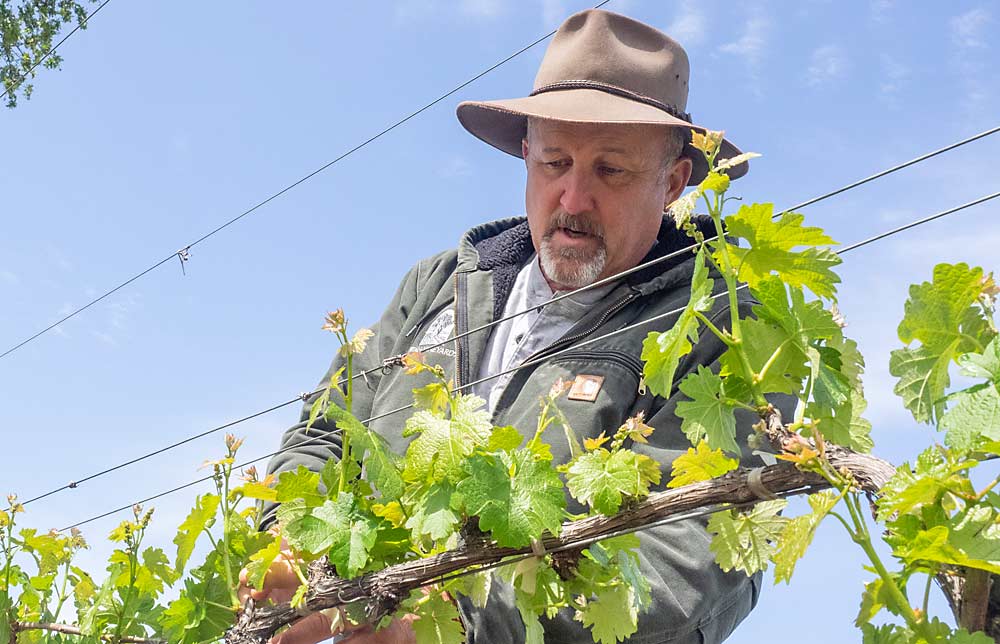
Data in, data out
Here’s the basic idea underlying regenerative agriculture: Natural lands have enough carbon in their soils to be in equilibrium with the atmosphere. But when people tilled the land, that broke up the aggregates that normally keep carbon in the soil, allowing the carbon to oxidize into planet-warming carbon dioxide. Now we want to put that carbon back in the soil.
But accurately accounting for the carbon on a farm is not a trivial undertaking.
The model the institute had growers use, COMET-Farm — a product of the U.S. Department of Agriculture’s Natural Resources Conservation Service and Colorado State University — incorporates site-specific data on soil, weather, plants and management practices. Pilot participants typically took a few weeks to collect the data needed.
COMET-Farm simulates the farm’s carbon cycle and spits out charts projecting how emissions and sequestration will change over the next decade under different practices. Separately, the institute also found models, less site-specific, to account for carbon emissions from farm vehicles and the carbon in natural areas or hedgerows. They don’t yet have a model to adequately estimate the carbon captured by the vines themselves.
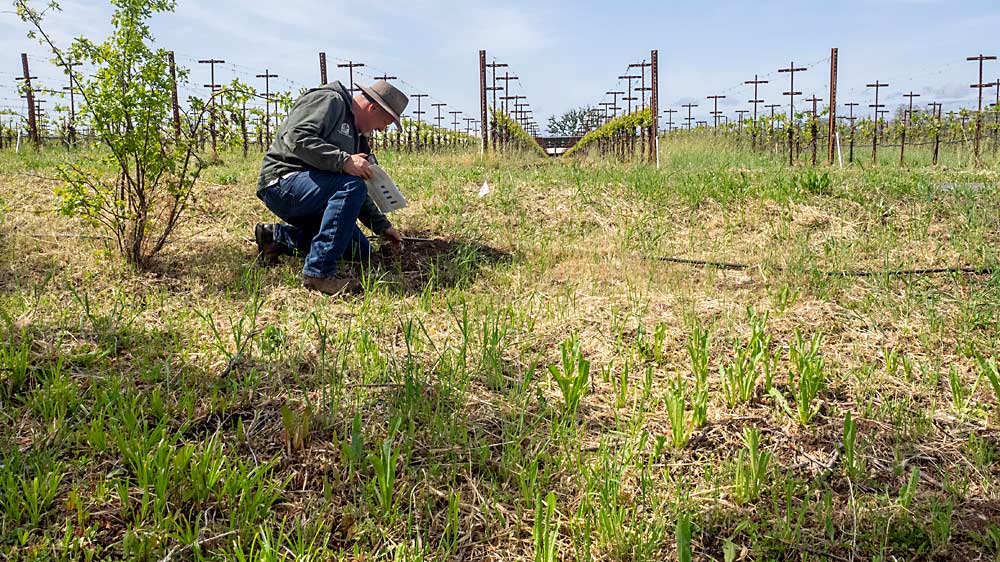
Overall, the pilot revealed growers were already using many climate-friendly practices. They don’t use much water or fertilizer compared to other crops, particularly at the same time, which means lower nitrous oxide emissions than using flood or furrow irrigation. (Nitrous oxide is a big-deal greenhouse gas — each molecule has 298 times the planet-heating effect as carbon dioxide.) Wine grape growers rarely use more than 50 pounds of fertilizer per acre, while corn growers routinely use 300 pounds per acre.
Petersen said Silver Oak has long been interested in sustainability; the company built a LEED Platinum-certified winery and, in 2015, acquired a Fish Friendly Farming certification from Marcus’ organization.
“Ultimately, we have to produce a high-quality product, and enough of it,” Petersen said. “That really trumps everything. But we want to know how to make the best decisions for the environment that we can, while still producing a quality product.”
One big takeaway for Petersen: The exact composition of the soil matters, carbonwise. A lot.
Under some conditions, soil microbes produce nitrates, which is good for the planet, at least in terms of the carbon cycle. Sometimes they produce nitrous oxide, which is not good. Sometimes they do both at once. (Such measurements are collected by turning select farms into temporary labs, by sticking tubes in the ground to collect gas samples from soils.)
“We need to think very microscopically about this stuff,” Marcus said.
And some soils, especially clayey ones, are subject to nitrogen oxide fluxes when it rains. Even no-till farming produces such fluxes; one study showed it took 10 years before the carbon the soil sequestered was equal to the nitrous oxide it released.
Silver Oak’s Alexander Valley estate includes Manzanita gravelly silt loam, Positas gravelly loam, Suther-Laughlin loams and a clay-free riverwash. The Manzanita and the Suther-Laughlin sequestered more carbon than the Positas, according to COMET-Farm, while the riverwash hardly held any carbon at all.
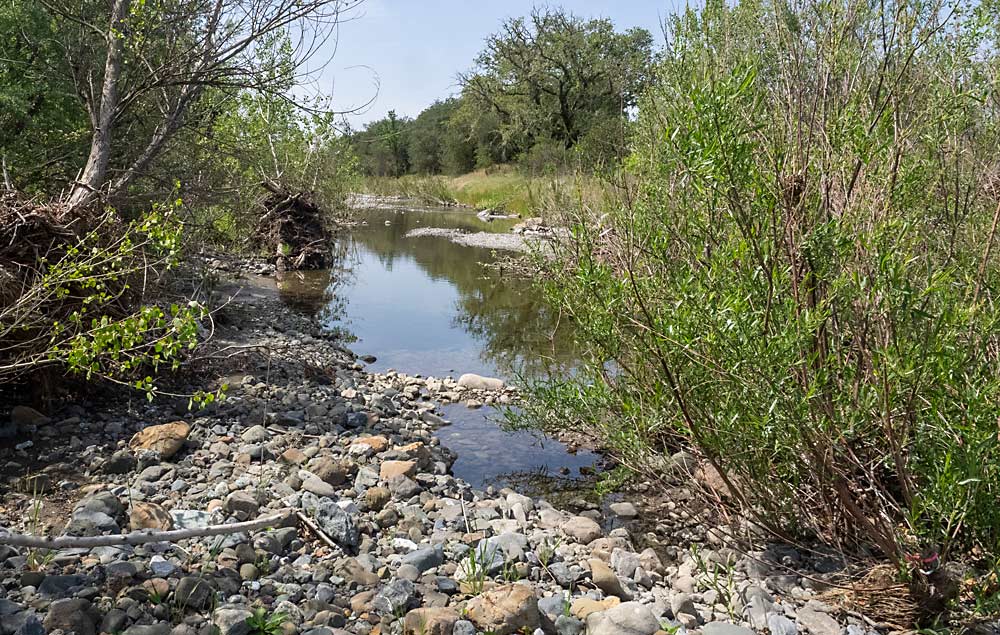
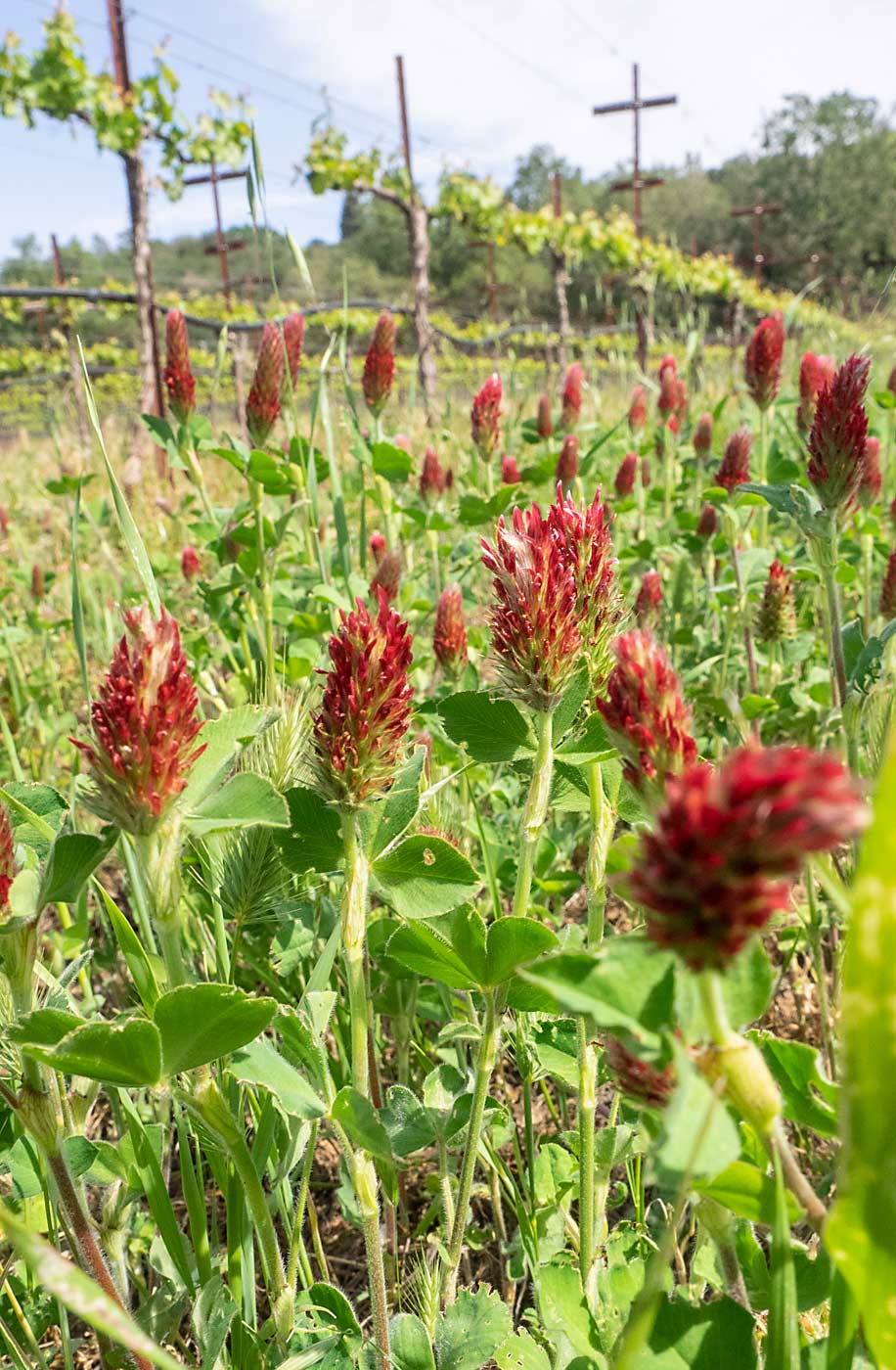
Growers already know their soils, Marcus said, but the carbon models added additional factors to consider.
“It gave them a lot more understanding of how these processes work,” she said. “Like, if I have a rocky soil, I can’t sequester as well as clay soil. Then they start thinking: ‘How can I farm differently?’”
Every year is different
Most regenerative agriculture proponents focus on no-till. But the costs and benefits of cover crops change with the weather. While most growers in the pilot used them, they also pushed back on requiring permanent no-till farming for the climate certificate. Cover crops don’t make sense in a drought when they’re competing with grapevines for water.
“As much as possible, we’ll leave the cover crop in,” Petersen said, now that he knows how much carbon it holds.
The emissions side of the equation is also subject to that kind of year-to-year variability. Petersen didn’t use much electricity and fuel in 2021, a dry year. With more rainfall, he would have needed more diesel to control growth, and less electricity for irrigation. His propane use was also minimal, but it wouldn’t be in a frostier year.
Changes must make sense for each farm individually, and they could be incremental, Marcus said.
“One of the ways farmers produce emissions is by having to spray, till, mow — all those passes of the tractor,” Marcus said. “Look at your operation — could I go from five to four? It doesn’t have to be so drastic as you will never use a tractor again.”
Walking a vineyard road, Petersen knelt at a ditch to check on his latest and perhaps easiest climate-oriented improvement: baby bushes of salvia, chaparral whitethorn and other California native plants. A drip line runs down the ditch for now, but once established these drought-resistant plants should be fine on their own. Even small vineyards can sequester carbon cheaply with hedgerows, Marcus said — “and who doesn’t love hedgerows?”
Petersen is also looking for spots to plant new trees where they won’t compete with the vines for sun or water. Trees’ carbon-capturing benefits are significant in their first 30 years or so, research suggests, after which they taper off, Marcus said.
Compost and other questions
Some carbon-equation improvements are a harder sell. Switching to compost from liquid nitrogen could theoretically boost Silver Oak’s carbon sequestration and significantly reduce emissions, according to the model.
“It really is amazingly different,” said Marcus.
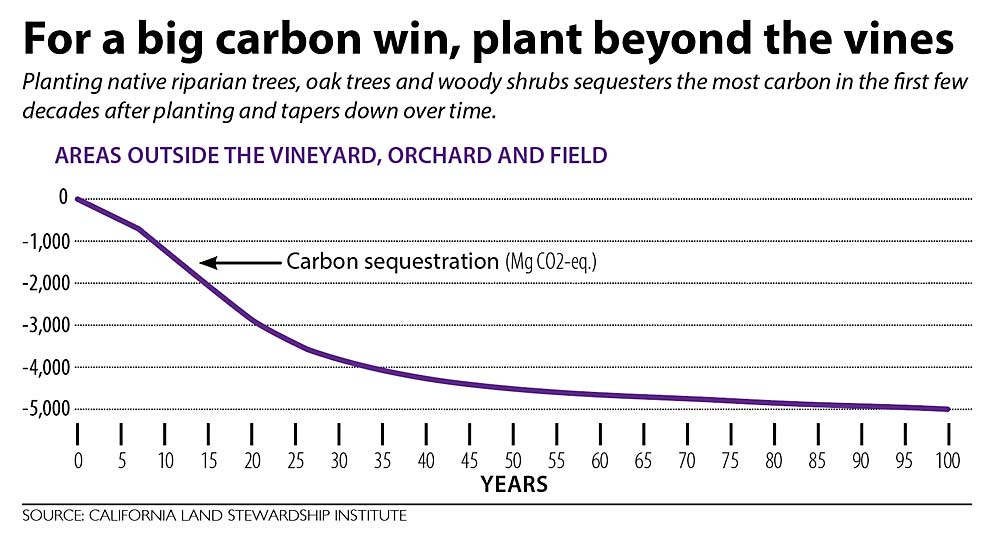
In practice, caveats abound.
First, adding carbon to the soil, with any method, is “a long, slow process,” because you’re constantly working against the microbes that chew it up, Marcus said. Second, the current model doesn’t account for how much energy goes into making the compost, or how much fuel it takes to deliver or distribute it, Petersen said.
“There’s still a lot of work to be done there on the calculations, to be able to determine what the actual carbon footprint is and where the benefits are,” he said.
And compost is expensive, whether you make it or buy it. However, food waste is now required to be composted in California. “In some period of time, we should have a lot more compost — which means it should be cheaper,” Marcus said.
Currently, the nonprofit is looking at how to add more sophisticated, site-specific modeling for greenhouse gas emissions that would allow more growers to participate in the carbon market that was designed to serve large commodity crop producers. It’s gathering more information for growers about the costs of climate-friendly practices, which will also help pinpoint areas where the government could help.
This year the program expanded to Mendocino and Napa counties. Marcus has seen another 50 or so growers sign up.
“A lot of our growers are young — in their 20s and 30s — and this is the issue for that generation,” Marcus said. “They want to know: ‘How can I make the farm the most climate-friendly possible?’ And they also want something that’s got the science in it.”
PRACTICES THAT IMPACT CARBON SEQUESTRATION
Vineyard practices that add carbon to soil:
—Adding biosolids.
—Adding manure.
—Adding compost.
—Cover cropping.
—Mulching.
—Retention of crop residue (chipping prunings or pulled vines to add to soil).
—Conservation tillage (leaving 30 percent of ground cover).
Practices that can result in carbon dioxide emissions:
—Conservation tillage (yes, this one belongs on both lists).
—Conventional tillage.
—Erosion.
—Grazing or removal of crop residues.
—Burning of vines or trees.
—by Kate Golden






Leave A Comment